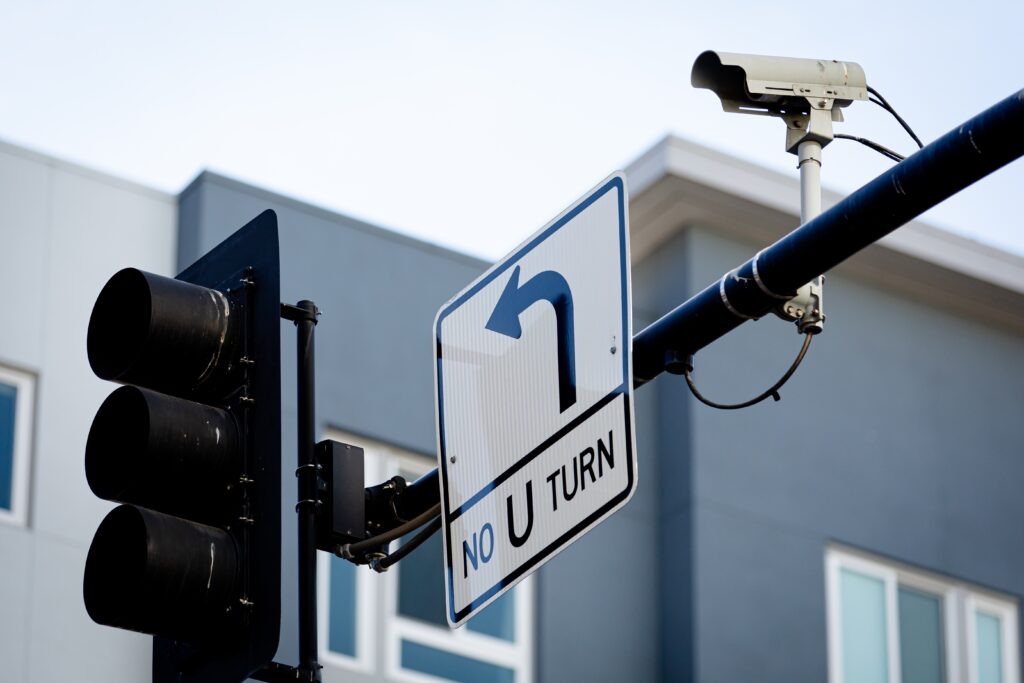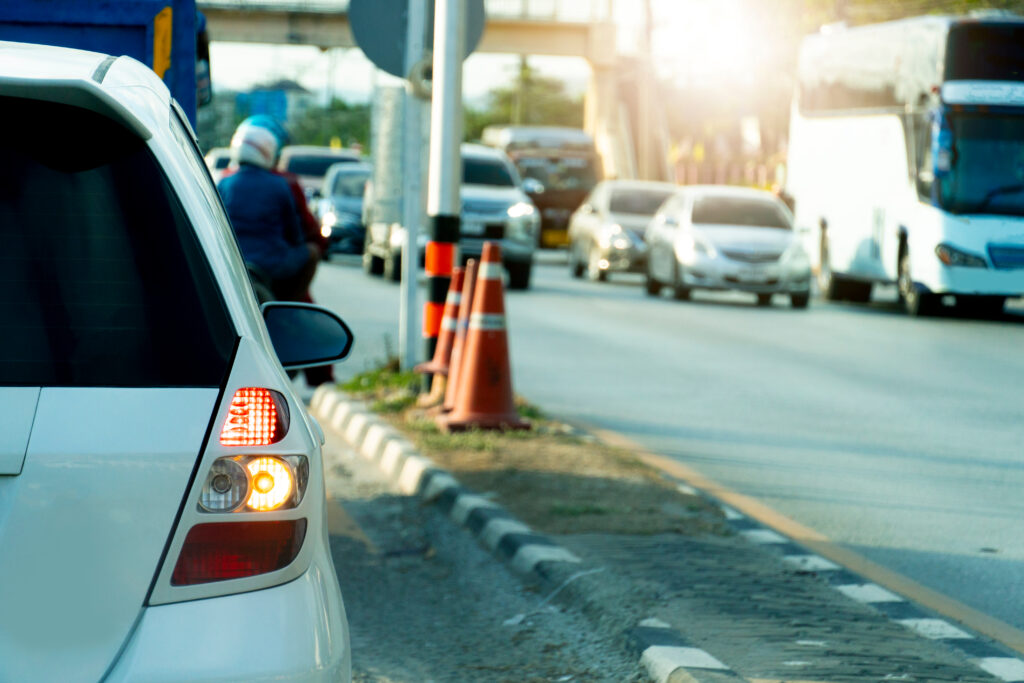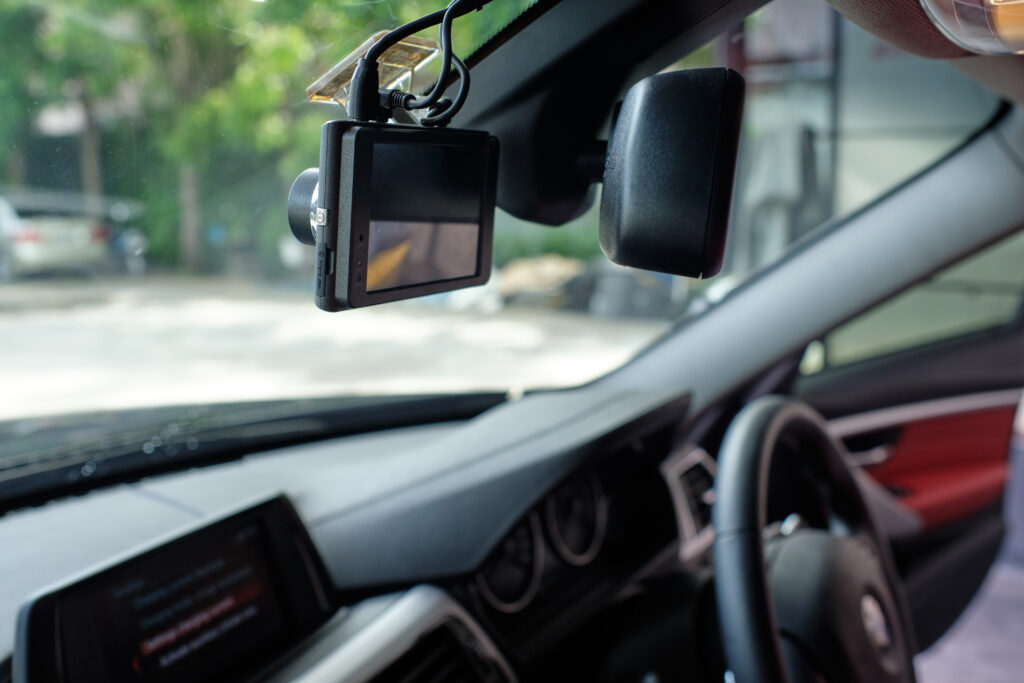As a Texas driver, you know that U-turns can be tricky to navigate and often lead to accidents that raise the question of fault and liability. When a U-turn accident in Texas occurs, it is critical to understand how insurance companies and legal professionals will determine who holds responsibility. Several factors come into play, including traffic signals, signage prohibiting or permitting the turn, the positions and actions of all vehicles involved, and any potential improper turns made by other motorists.
U-turns require an extra level of caution since visibility is limited and other drivers may not expect a vehicle to turn around in the roadway. However, liability is not always clear cut in these situations. If you find yourself in a dispute over fault, consulting a Lewisville Car Accident Lawyer can help protect your rights. By understanding the rules of the road and how fault is assessed, you can avoid making errors that lead to accidents, or know how to properly handle one should it occur during your U-turn. The outcome often comes down to details, so pay close attention to the circumstances and events surrounding your U-turn.
Understanding U-Turn Laws in Texas
In Texas, drivers making U-turns must yield to oncoming traffic and pedestrians, and only perform U-turns where permitted. On most roads, U-turns are prohibited. However, Texas law does allow U-turns under certain circumstances.
On a two-way roadway, U-turns are permitted if:
- There are no signs prohibiting U-turns.
- You have a clear view of approaching traffic for at least 500 feet in both directions.
- You yield the right-of-way to vehicles approaching from either direction.

On a divided highway, U-turns are allowed only at designated openings in the median. U-turns over an at-grade barrier, such as a concrete divider, are strictly prohibited.
When determining fault in a Texas U-turn accident, the key factors considered are:
- Which vehicle had the right-of-way? The vehicle proceeding straight typically has right-of-way over a vehicle making a U-turn.
- Was the U-turn legally permitted at that location? If not, the driver making the illegal U-turn will likely be found primarily at fault.
- Did the driver making the U-turn fail to yield to oncoming traffic? If so, that driver will likely shoulder most, if not all, of the liability.
- Were there any obstructions like weather conditions, vegetation, or buildings that prevented either driver from seeing the other vehicle? If visibility was obstructed for either driver, fault may be split.
In summary, drivers must exercise caution when making U-turns in Texas. Failure to yield to oncoming traffic or making an illegal U-turn could result in serious legal liability in the event of an accident. When in doubt, it is best to avoid making a U-turn altogether.
Common U-Turn Accident Scenarios
As the driver making a U-turn, you are typically considered at fault for any resulting accident. There are a few common scenarios where the other driver may share some liability:
When the other vehicle is speeding or driving recklessly
If the other driver is exceeding the speed limit or driving aggressively when you begin your U-turn, they may be partially at fault. Their reckless driving made it difficult for you to safely complete your turn. However, you still share blame for attempting a turn when it was not 100% safe to do so.
When visibility is limited
In some cases, visibility issues like heavy traffic, inclement weather, or obstructed views can contribute to a U-turn accident. If you could not see oncoming traffic clearly when you started your turn, the other driver may hold some responsibility for not driving cautiously enough under the conditions. But as the turning driver, you should have exercised more caution until you had a safe gap in traffic.
When the other driver is not paying attention
Distracted or inattentive drivers who do not see you initiating a U-turn and react in time may share fault. However, as the U-turning driver, you are still primarily responsible for verifying that the way is clear and that other vehicles have yielded before turning.
While the other driver’s actions or inactions may have been a factor, the driver performing the U-turn typically bears the majority of liability in an accident. Safe and legal driving includes checking that the roadway is clear in all directions before attempting any turn or lane change. By exercising caution and vigilance, many U-turn accidents can be avoided.
Is Making a U-Turn Always Illegal?
In Texas, making a U-turn is not always illegal, but there are specific laws regarding when and how U-turns can be made. According to the Texas Transportation Code, U-turns are permitted as long as:
- The turn can be made safely and without interfering with other traffic.
- It is made at an intersection or a driveway.
- No signs prohibit U-turns.
- The vehicle completes the turn without leaving the roadway.
Intersections
At an intersection, a U-turn is allowed if there are no signs forbidding it and you yield to all oncoming traffic and pedestrians. You must wait for approaching vehicles from both directions to pass before attempting the turn. It is illegal and dangerous to make a U-turn in the middle of a block or in between intersections.
Driveways
U-turns are also permitted when using a driveway to turn a vehicle around. Again, you must check for any signs prohibiting U-turns before attempting to turn around in a driveway. You should also obtain permission from the property owner if turning around in a private driveway.
Prohibited Areas
Some locations where U-turns are specifically prohibited include:
- Interstate highways and freeway entrance/exit ramps.
- Areas with double yellow lines, such as no passing zones.
- Railroad crossings or tracks.
- Where signs like "No U-turn" are posted.
In summary, while U-turns are typically allowed in Texas if done safely and legally, there are several situations where they are prohibited due to traffic laws or safety concerns. When in doubt, it is best to find an alternate route rather than risking a traffic violation or accident by making an illegal U-turn.
Fault Determination in Rear-End U-Turn Accidents
Under Texas law, liability in a rear-end accident involving a U-turn is determined by examining which party acted negligently and contributed to the cause of the crash. As the driver initiating the U-turn, you must yield the right-of-way to oncoming traffic and ensure the turn can be made safely before changing direction. Failure to do so constitutes negligence and fault may be attributed to you.

Duty to Yield
The driver executing a U-turn has a duty to yield to vehicles with the right-of-way. This means you must wait until oncoming traffic has cleared before turning around. If you turn in front of another vehicle and cause an accident, you will likely be found primarily at fault for failing to yield. The other driver had no reasonable expectation you would suddenly turn into their path.
Lack of Proper Lookout
Simply looking for oncoming vehicles is not enough. As the driver making the U-turn, you have a responsibility to keep a proper lookout in all directions to detect approaching traffic in time to avoid a collision. If you proceed with a U-turn without seeing an oncoming vehicle close enough to constitute an immediate hazard, you may be deemed negligent for failing to keep an adequate lookout. The other driver would not expect you to turn when their vehicle is in such proximity.
Failure to Signal
In some cases, failing to signal a U-turn in advance can also contribute to fault in a rear-end accident. While the other vehicle still has a duty to avoid hitting you if possible, not signaling your intention to turn deprives them of information that may have allowed them to react sooner. Fault may be apportioned to both parties, with you receiving a greater share for the unsignaled turn.
In summary, as the driver performing a U-turn, the majority of fault in a rear-end accident will typically reside with you if it can be shown you acted negligently by failing to yield, keep a proper lookout for other vehicles, or signal your intention before turning. The other driver is expected to be proceeding with normal traffic flow and has right-of-way over your U-turning vehicle. By exercising reasonable care and caution, fault can often be avoided in these situations.
Fault When a U-Turn Driver Hits Oncoming Traffic
In the event of an accident involving a U-turn in Texas, determining fault can be complicated. According to Texas Transportation Code §545.061, drivers must exercise "due care" when making a U-turn. Failure to do so could result in the U-turning driver being found at fault.
U-turn Driver's Duty to Yield
The driver executing the U-turn must yield the right-of-way to oncoming traffic and ensure the turn can be made safely. If the U-turn driver fails to yield and collides with an oncoming vehicle, the U-turn driver will typically be found predominantly or entirely at fault for the accident. The oncoming vehicle had the right-of-way, so the U-turn driver is obligated to yield.
Oncoming Driver's Duty to Avoid Collision
Oncoming drivers have a duty to exercise ordinary care to avoid an accident, if possible. If the oncoming driver was speeding, distracted, or failed to take evasive action to avoid hitting a vehicle making a U-turn, they may share some fault. The oncoming driver should make an effort to change lanes, brake, or take other action to prevent hitting the U-turning vehicle, especially if the U-turn was being executed properly with a signaled turn and a reasonable gap in traffic.
Mitigating Factors
Other factors may mitigate or increase the fault of the drivers involved, such as:
- Traffic conditions like density, visibility, and speed limit.
- Use of turn signals by the U-turning driver to signal intent.
- Timely braking or evasive maneuvers attempted by either driver.
- Distracted driving by either driver, like cell phone use or drowsiness.
In summary, while the U-turning driver typically shoulders the majority of fault in a U-turn accident with oncoming traffic, the oncoming driver may share some liability if they failed to exercise ordinary care to avoid the collision. An investigation of the specific circumstances by police and insurance companies will determine how fault is apportioned between the drivers. Drivers should always exercise caution and patience when navigating U-turns and passing U-turning vehicles.
Pedestrian and Cyclist Injuries From U-Turns
Pedestrians and cyclists are especially vulnerable in U-turn accidents. When a driver makes a U-turn, their visibility is often impaired by vehicles around them, increasing the chance of not seeing a pedestrian or cyclist and hitting them.
As a pedestrian or cyclist, there are a few precautions you can take to avoid being hit by a vehicle making a U-turn:
- Be aware of your surroundings. Pay attention to vehicles around you that may be attempting a U-turn. Make eye contact with drivers to ensure they see you before crossing in front of them.
- Follow the rules of the road. Cross streets only at crosswalks and obey traffic signals. This makes you more visible to drivers and establishes your right of way.
- Wear reflective and high-visibility clothing. Bright colors and reflective strips help ensure you are seen by drivers, especially at night. This is particularly important for cyclists.
- Be cautious around large vehicles. It can be difficult for drivers of trucks, vans and SUVs to see pedestrians and cyclists around their vehicle. Exercise extra caution passing these larger vehicles, as they may not see you when initiating a U-turn.
If you are hit by a vehicle making a U-turn as a pedestrian or cyclist, the driver is typically considered at fault. However, the specific circumstances of the accident and details regarding right of way and visibility also factor into determinations of liability. It is advisable to contact an accident attorney to understand your legal rights and options for pursuing compensation for any injuries or damages. They can review details of the accident, determine appropriate parties to pursue legal claims against, and represent you throughout the legal process.
While no one expects to be hit by a vehicle when walking or biking, exercising caution and understanding your rights can help reduce risks and ensure you receive fair treatment if an accident does occur. Drivers making U-turns must be extremely vigilant to avoid hitting pedestrians and cyclists, who deserve the right of way and should not suffer harm due to driver negligence or improper vehicle operation.
How Dashcams Can Help Determine Fault

Dashcams, or dashboard cameras, are becoming increasingly popular for drivers and can be useful in determining who is at fault in a traffic accident, especially a U-turn collision. Dashcams continuously record video and audio while a vehicle is operating, capturing footage of the driver's surroundings, traffic conditions, and any accidents or incidents that may occur.
Capturing the Accident
If a U-turn accident occurs, a dashcam can capture video evidence of the events leading up to and during the collision. The footage may show which driver failed to yield the right of way or made an unsafe maneuver. Dashcam video is impartial and provides an unbiased account of the situation. This evidence can help insurance companies and law enforcement accurately determine which party is responsible for the accident.
Providing Context
A dashcam offers a broader view of the driving conditions and environment surrounding an accident. The footage may show traffic flow, traffic control devices like signals or signs, and any obstructions to visibility. This context helps create a more complete picture of the events and factors contributing to the collision. With a dashcam, there is little room for debate over the circumstances that led to the U-turn accident.
Deterring Fraudulent Claims
Unfortunately, some drivers may try to commit insurance fraud by falsely claiming another driver is at fault for an accident. Dashcam footage helps eliminate the possibility of fraudulent claims by providing concrete evidence of what really transpired. The video and audio recording cannot be disputed and will invalidate any dishonest claims made against the other driver.
For any driver, a dashcam is a worthwhile investment to help determine fault in the event of an accident and protect against fraud. The footage from a dashcam acts as an impartial witness and provides the necessary evidence and context to properly assess responsibility in a U-turn collision or any other traffic incident. With video evidence, there is little left to question about how the accident occurred.
Steps to Take After a U-Turn Accident
After a U-turn accident in Texas, it is important to take the proper steps to protect yourself legally and financially.
Stop Immediately and Call the Police
The first thing you should do is stop your vehicle immediately and call 911 to report the accident. Do not leave the scene. Wait for the police to arrive so you can file an official accident report. This report will contain important details about the incident that may be useful for insurance claims and determining fault.
Exchange Information
Next, you will need to exchange information with the other driver(s) involved, including:
- Name and contact details
- Driver's license number
- License plate number
- Insurance details (company, policy number)
Be sure to also get the names and contact details of any passengers or witnesses present.
Document the Accident Scene
While waiting for the police and the other driver, use your phone to take photos of the accident scene, including:
- Damage to all vehicles involved
- The location of the vehicles after the accident
- Any traffic signs or signals at the intersection
- Skid marks on the road
- Debris from the accident
These details can help determine who is liable in the accident. Also draw a basic diagram of the accident scene to give to the police and your insurance provider.
Contact Your Insurance Company
Notify your insurance company about the accident as soon as possible. Provide them with the official police report, details of the other driver(s), photos from the accident scene, and information exchanged. Your insurance company will investigate the incident to establish fault and determine appropriate compensation.
Seek Medical Attention
Even if there are no obvious injuries, it is a good idea to get checked out by a doctor following an accident. Some injuries like whiplash can take time to manifest. Seeking prompt medical attention will also provide documentation of your condition, which may be important for any insurance claims related to accident-related injuries.
FAQ on U-Turn Accidents and Liability
In the event of an accident involving a U-turn in Texas, determining who is at fault can be complicated. Several factors are considered to establish liability.
Right-of-way
The vehicle executing the U-turn must yield the right-of-way to oncoming traffic and pedestrians. Failure to do so indicates the U-turning driver did not exercise proper care and caution, making them primarily liable for any resulting collision.
Signal use
Did the U-turning driver properly signal their intent to turn? Failure to signal a U-turn deprives oncoming drivers of important information needed to react and avoid an accident. Lack of signaling suggests the U-turning driver's negligence and fault.
Traffic controls
U-turns must be made in accordance with all traffic signs and signals. Disregarding "No U-turn" signs or making a U-turn where prohibited indicates the U-turning driver violated traffic controls, making them largely responsible for any accident.
Speed and control
The driver executing the U-turn must do so at a safe speed that allows them to maintain control of their vehicle. Failure to control speed or properly complete the turn suggests driver error that contributed to the accident. However, the other driver must also exercise caution and control their speed to avoid hitting a vehicle that is U-turning. Fault may be shared in some situations.
Vision obstructions
If visibility was obscured for either driver in a way that prevented seeing the other vehicle in time to avoid an accident, fault may lie with whoever was responsible for the obstruction or failed to operate their vehicle safely under the conditions. Blind spots, sunlight glare, traffic, buildings or other obstructions must be accounted for by all drivers.
In summary, determining fault in a U-turn accident depends on a careful examination of the specific circumstances surrounding the incident. While the driver executing the turn typically bears more responsibility due to their duty to yield, the other driver also must act reasonably to avoid an accident. Fault may be shared between drivers in some situations. The particulars of each case dictate the outcome.
Conclusion

As you can see from the scenarios discussed, determining fault in a Texas U-turn accident can be complicated with many factors to consider. The driver making the U-turn typically bears more responsibility, but the other driver still has a duty to exercise reasonable care and caution. Both drivers would be wise to remain at the scene, exchange information, report the accident to the police, and contact their insurance companies. Though it may be an inconvenience, cooperating fully with lawyers at Fletcher Law and insurance representatives will help determine liability and ensure proper handling of claims. If you’ve been injured in such an accident, consulting a Lewisville personal injury lawyer can help protect your rights and secure fair compensation. Taking responsibility for your actions, following the rules of the road, and driving defensively are the best ways to avoid getting into an accident in the first place. Staying safe on Texas roads is a shared responsibility.